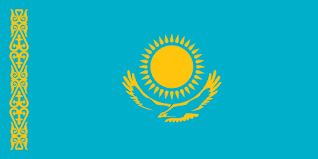ҚАЗАҚСТАНДА ТАРАЛҒАН ДӘРІГЕ-ТӨЗІМДІ M. TUBERCULOSIS КЛИНИКАЛЫҚ ИЗОЛЯТТАРЫН ГЕНОТИПТЕУ
Туберкулез, әсіресе дәріге-төзімді туберкулез Қазақстанда медицинаның өзекті мәселелерінің бірі болып қалуда. Мультирезистентті туберкулезбен ауру көрсеткіштері біздің мемлекетімізде 12 жыл ішінде 8 есеге көбейді, 2003 және 2015 жылдар аралығында 100000 халыққа 1,7-ден 13,5-ке көбейді. Әр түрлі мемлекеттердегі зерттеулердің мәліметтері бойынша, Beijing M.tuberculosis тұқымдасының штаммдары дәрілік төзімділікпен ассоциацияланған, әсіресе мультирезистентті туберкулезбен. Жұмыстың мақсаты: Қазақстанда таралған 192 дәріге-төзімді M.tuberculosis клиникалық изоляттарын сполиготиптеу әдісімен генотиптеу және дәрілік төзімділік пен Beijing M.tuberculosis генотипінің арасындағы байланысты анықтау. Сполиготиптеу нәтижелері W-Beijing генотипі дәріге-төзімді M.tuberculosis штаммдарының арасында ең кең таралған генотип екенін көрсетті (74,48%). Beijing M.tuberculosis генотипінің дәрілік төзімділікпен байланысын анықтау аталған генотиптің 50% жоғары жағдайында полирезистентті (70,9%) және мультирезистентті (87,75%) изоляттардың арасында кездесетінін көрсетті.
Улан А. Кожамкулов1, http://orcid.org/0000-0002-9782-7631
Айнур Ж. Ахметова1,2, http:// orcid.org/0000-0002-5557-3338
Венера Л. Бисмилда3, Scopus ID: 8441834800
Ляйля Т. Чингисова3, Scopus ID: 39261046300
Айнур Р. Акильжанова1,2, http://orcid.org/0000-0001-6161-8355
1 Өмір туралы ғылымдар орталығы, National Laboratory Astana, Назарбаев университеті,
Нұр-Сұлтан қ., Қазақстан Республикасы;
2 Жалпы биология және геномика кафедрасы, Л.Н.Гумилев атындағы Еуразия Ұлттық университеті,
Нұр-Сұлтан қ., Қазақстан Республикасы;
3 ҚР Ұлттық фтизиопульмонология ғылыми орталығы,
Алматы қ., Қазақстан Республикасы.
1. Akhmetova A., Kozhamkulov U., Bismilda V. et al. Mutations in the pncA and rpsA genes among 77 Mycobacterium tuberculosis isolates in Kazakhstan // International Journal Tuberculosis and Lung Diseases. 2015. №19(2). P. 179-184.
2. Coll P., Garcia de Viedma D. Molecular epidemiology of tuberculosis // Enferm Infecc Microbiol Clin. 2018. №36(4). P. 233-240.
3. Garcia de Viedma D., Marin M., Hernangomez S. et al. Tuberculosis recurrences: reinfection plays a role in a population whose clinical/epidemiological characteristics do not favor reinfection // Arch Intern Med. 2002. №162. P. 1873-1879.
4. Ibrayeva A., Kozhamkulov U., Raiymbek D. et al. Molecular epidemiology of Mycobacterium tuberculosis strains circulating in the penitentiary system of Kazakhstan // International Journal Tuberculosis and Lung Diseases. 2014. №18(3). P. 298-301.
5. Ilin A.I., Kulmanov M.E., Korotetskiyet I.S. et al. Complete Genome Sequence of Multidrug-Resistant Clinical Isolate Mycobacterium tuberculosis 187.0, Used To Study the Effect of Drug Susceptibility Reversion by the New Medicinal Drug FS-1 // Genome announcements. 2015. №3(6). P. 1-2.
6. Kairov U., Kozhamkulov U., Molkenov A., Rakhimova S. et al. Draft Genome Sequences of Two Clinical Isolates of Mycobacterium tuberculosis from Sputum of Kazakh Patients // Genome announcements. 2015. №3(3). P. 1-2.
7. Kozhamkulov U., Akhmetova A., Rakhimova S. et al. Molecular characterization of rifampicin- and isoniazid-resistant Mycobacterium tuberculosis strains isolated in Kazakhstan // Japanese Journal of Infectious Disease. 2011. №64. P. 253-255.
8. Kubica T., Agzamova R., Wright A., Aziz M.A., Rakishev G., Bismilda V., Richter E., Rüsch-Gerdes S., Niemann S. The Beijing genotype is a major cause of drug-resistant tuberculosis in Kazakhstan // Int J Tuberc Lung Dis. 2005. №9(6). P. 646–653.
9. Navarro Y., Herranz M., Perez-Lago L. et al. Systematic survey of clonal complexity in tuberculosis at a populational level and detailed characterization of the isolates involved // J Clin Microbiol. 2011. №49. P. 4131-4137.
10. Niemann S., Diel R., Khechinashvili G., Gegia M., Mdivani N., Tang Y. Mycobacterium Tuberculosis Beijing Lineage Favors the Spread of Multidrug-Resistant Tuberculosis in the Republic of Georgia // J Clin Microbiol. 2010. №48(10). P. 3544-50.
11. Reichman L.B. et.al. The global epidemic of multi-drug-resistant tuberculosis. - New York: McGraw-Hill. 2001. P.320.
12. San et.al. Insight into multidrug-resistant Beijing genotype Mycobacterium tuberculosis isolates in Myanmar // International Journal of Infectious Diseases. 2018. №76. P. 109-119.
13. Skiba Y., Mokrousov I., Ismagulova G. et al. Molecular snapshot of Mycobacterium tuberculosis population in Kazakhstan: A country-wide study // Tuberculosis. 2015. №95(5). P. 538-546.
14. Statistic TB Review (Editor Zh.K. Ismailov). Ministry of Health Republic of Kazakhstan. – Almaty: National TB Center. 2017. P. 75.
15. Van Soolingen, D., Qian, L., de Haas, P. E. et al. Predominance of a single genotype of Mycobacterium tuberculosis in countries of East Asia // J. Clin. Microbiol. 1995. №l33. P. 3234-3238.
16. Van Soolingen D., Kremer K., Vynycky E. New perspectives in the molecular epidemiology of tuberculosis // In book: Mycobacteria and TB. Berlin. 2003. №2. P. 17-45.
17. Verver S., Warren R.M., Munch Z. et al. Proportion of tuberculosis transmission that takes place in households in a high-incidence area // Lancet. 2004. №363. P. 212-214.
18. World Health Organization. Laboratory services in tuberculosis control. Part III. Geneva. WHO. 1998. P. 65.
19. World Health Organization. Guidelines for surveillance of drug resistance in tuberculosis. Ed. 2nd. Geneva. World Health Organization. 2003. P. 73.
20. World Health Organization: Global tuberculosis report 2015 (Ed. 20th). Geneva: World Health Organisation. 2015. P. 204.
21. Yin Q.Q. et al. Evolutionary history and ongoing transmission of phylogenetic lineages of M. tuberculosis Beijing genotype in China // Scientific reports. 2016. №6:34353. Р. 1-11.
Көрген адамдардың саны: 366
Мақалалар санаты:
Біртума зерттеулер
Библиографиялық сілтемелер
Кожамкулов У.А., Ахметова А.Ж., Бисмилда В.Л., Чингисова Л.Т., Акильжанова А.Р. Қазақстанда таралған дәріге-төзімді M. Tuberculosis клиникалық изоляттарын генотиптеу // Ғылым және Денсаулық сақтау. 2020. 4 (Т.22). Б. 71-79. doi 10.34689/SH.2020.22.4.007Ұқсас жариялымдар:
ОРТА ЖАСТАҒЫ ЖӘНЕ ЕГДЕ ЖАСТАҒЫ АДАМДАРДАҒЫ ДЕНЕ САЛМАҒЫ ИНДЕКСІ МЕН СҮЙЕКТІҢ МИНЕРАЛДЫ ТЫҒЫЗДЫҒЫ АРАСЫНДАҒЫ БАЙЛАНЫС
САРКОИДОЗ ЖӘНЕ ӨКПЕ ТУБЕРКУЛЕЗІ КЕЗІНДЕГІ ГРАНУЛЕМАТОЗДЫ ҚАБЫНУДЫ КЛИНИКА-МОРФОЛОГИЯЛЫҚ ЖӘНЕ МОРФОМЕТРИЯЛЫҚ БАҒАЛАУ
БЕЛСЕНДІ ТУБЕРКУЛЕЗБЕН АУЫРАТЫН АИТВ ЖҰҚТЫРҒАН НАУҚАСТАРДА БАУЫРДЫҢ ДӘРІЛІК ЗАҚЫМДАНУЫ: САЛЫСТЫРМАЛЫ ЗЕРТХАНАЛЫҚ СИПАТТАМАСЫ
ҚАЗАҚСТАН РЕСПУБЛИКАСЫНДАҒЫ СОЗЫЛМАЛЫ ЖҮРЕК ЖЕТКІЛІКСІЗДІГІ БОЙЫНША АУРУЛАРДЫ БАСҚАРУ БАҒДАРЛАМАСЫН ІСКЕ АСЫРУ НӘТИЖЕЛЕРІ
ИНСУЛИНГЕ ТӨЗІМДІЛІГІ БАР НАУҚАСТАРДА ИНСУЛЬТ КЕЗІНДЕ ІШЕК МИКРОБИОМАСЫНЫҢ СИПАТТАМАСЫ
